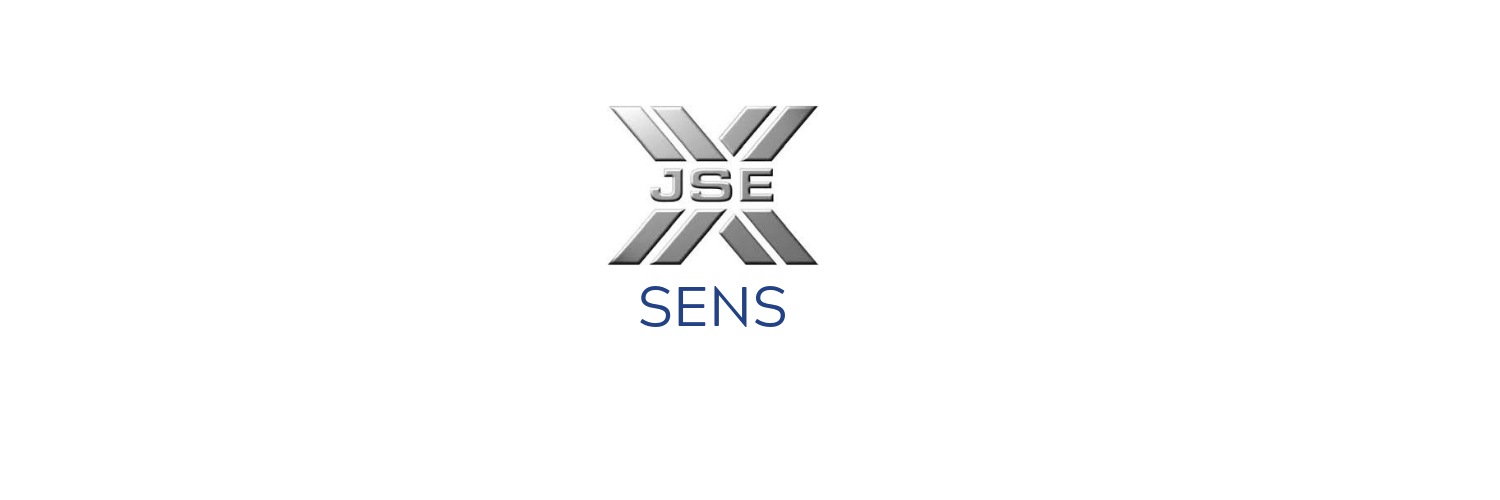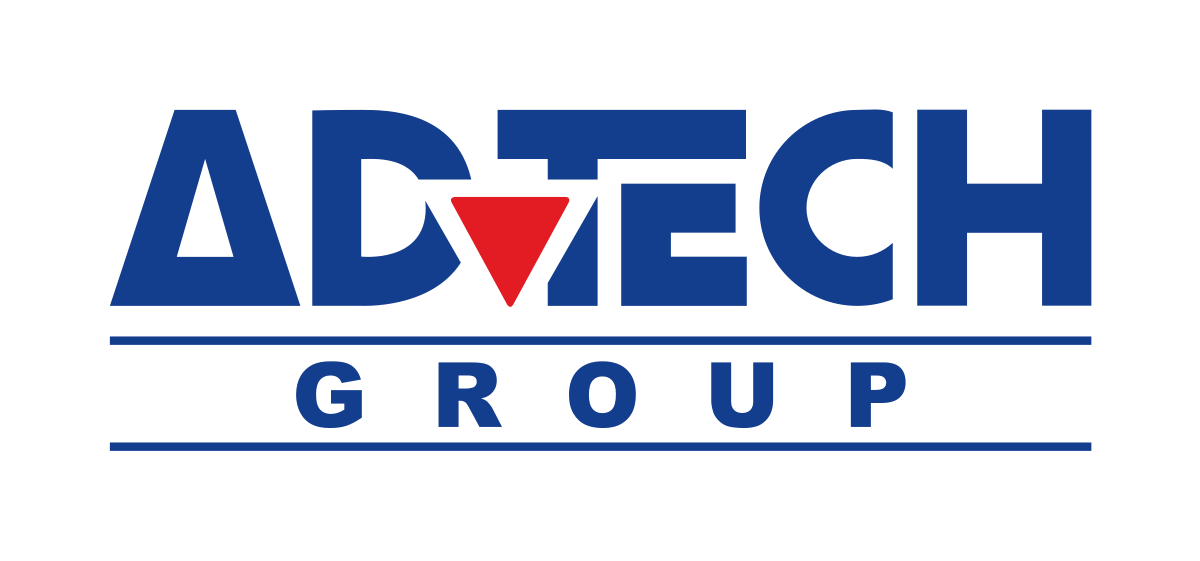Choosing Life Sciences in High School
Written by: James Messian, Life Sciences Teacher at Abbotts College Centurion
Life Sciences or biological sciences comprise the branches of science that involve the scientific study of life and organisms such as microorganisms, plants, and animals including human beings.
Life Sciences is one of the two major branches of Natural Science, the other being Physical Science, which is concerned with non-living matter.
Some life sciences focus on a specific type of organism. For example, Zoology is the study of animals, while Botany is the study of plants. Other life sciences focus on aspects common to all or many life forms, such as anatomy and genetics. Some focus on the micro scale (e.g. molecular biology, biochemistry) and other on larger scales (e.g. cytology, immunology, ethology, ecology). Another major branch of life sciences involves understanding the mind i.e. neuroscience.
Discoveries made in Life Sciences are helpful in improving the quality and standard of life and can be applied to health, agriculture, medicine as well as the pharmaceutical and food science industries.
In the Grade 12 syllabus, Abbotts covers a section on genetics and the study of DNA. Genetics is a branch of biology concerned with the study of genes, genetic variation, and heredity in organisms.
Though heredity had been observed for millennia, Gregor Mendel, a scientist and Augustinian friar working in the 19th century, was the first to study genetics scientifically. Mendel studied “trait inheritance”, patterns in the way traits are handed down from parents to offspring. He observed that organisms (pea plants) inherit traits by way of discreet “units of inheritance”. This term, still used today, is a somewhat ambiguous definition of what is now referred to as a “gene” and therefore the term “genetics”.
As complicated as what it sounds, genetics is the section that most teachers are passionate about. There is such a sense of gratification when learners ask questions about why they have certain characteristics from their mom or dad and, once you go through the content with them, the lightbulb switches on. As a teacher, it’s remarkable to witness says James Messian, Life Sciences Teacher at Abbotts College Centurion.
The study of the Life Sciences gives important insight into disease processes and allows the development of novel therapeutic and innovative medical devices, thereby directly improving human health. Life Sciences also enables an understanding of the environment and the other living species with which we share the earth. This knowledge guides conservation efforts and helps us to save our shared planet.
Life Sciences empowers us to answer fundamental questions about ourselves: Where did we come from? What are we made of? What is the basis for the miracle of our existence? What is our place in the natural world, in the tree of life? Life Sciences reveals the truth of our existence and shines a light on our real identities, so that we discover our true reality.
If you take Biology or Life Sciences as one of your subjects, it can open a lot of opportunities. It is a multi-discipline field that requires you, as a student, to learn, apply, evaluate and to do practical work.
While many people view Life Science as one of the hardest, and the most boring subjects, it is really one of the most interesting.
Important ways to help one master this subject are:
- to listen carefully in class
- immediately review what has been taught
- keep reading.
One thing that learners need to remember is that after mastering the subject, there are plenty of career opportunities available to them.
Those who are interested in the field of Biology can either decide to become social or medical researchers or go the industry route. This is vast, and includes tourism, conservation, agriculture, journalism, veterinary science, environmental law, biotechnology, biochemistry and medicine.
Students who choose this subject must prepare themselves for a lot of work.
There is lots to learn, meaning that the workload may seem overwhelming at times, but they need to know how to apply knowledge as well as how to evaluate and understand it. Here’s a handy summary of the different jobs you will find in the Life Sciences sector:
Biomedical Scientist
Biomedical scientists examine medical samples, for example, blood and tissue, thereby helping doctors to diagnose and treat diseases. They use their knowledge and test results to advise and support doctors and other medical staff. Biomedical scientists need in-depth knowledge of areas such as pathology, anatomy and physiology.
Biotechnologist
Biotechnologists combine Biology, the science of living things, with technology. They research and develop the use of Biology to solve problems in areas such as health care, the pharmaceutical and chemical industries, agriculture, food production and environmental protection
Biochemist
Biochemists study the chemistry of life. They investigate life’s processes at the level of molecules, using their knowledge to identify and solve biological problems. They research and develop new products and processes to benefit a wide range of areas, including food processing, pharmaceuticals, healthcare and agriculture.
Computational Biologist
Computational biology involves the development and application of data-analytical and theoretical methods, mathematical modelling and computational simulation techniques to the study of biological, behavioural, and social systems. The field is broadly defined and includes foundations in computer science, applied mathematics, animation, statistics, biochemistry, chemistry, biophysics, molecular biology, genetics, genomics, ecology, evolution, anatomy, neuroscience, and visualization
Microbiologist
Microbiologists study the biology and chemistry of microbes. They apply their knowledge to solve problems in areas like agriculture, food production, the water industry, medicine and pharmaceuticals, and to manage and protect the environment.
Clinical Research Associate
Clinical research associates organise and run trials to test the safety of new medicines and to see if they work efficiently. They choose and set up sites where tests take place, supervise trials and monitor the quality of data from the trials.
Industrial Pharmacist
Industrial pharmacists are involved in the discovery and development of safe, effective drugs and medicines. They can work at any stage of the process, including research, development, clinical trials, overseeing production, quality testing, marketing and applying to have the drug legally registered.
Research Assistant
A research assistant is a researcher employed, often on a temporary contract, by a university or a research institute, for the purpose of assisting in academic research. Research assistants are not independent and not directly responsible for the outcome of the research and are responsible to a supervisor or principal investigator. Research assistants are often educated to degree level and might be enrolled in a postgraduate degree program and teach at the same time.
Bioinformatician
Bioinformatics is an interdisciplinary field that develops methods and software tools for understanding biological data. As an interdisciplinary field of science, bioinformatics combines computer science, statistics, mathematics, and engineering to study and process biological data.
For more information please visit:
ADvTECH Updates

ADvTECH Limited (Incorporated in the Republic of South Africa) (Registration number 1990/001119/06) Share code: ADH ISIN: ZAE000031035 (“ADvTECH” or “the Company”) DEALINGS IN SECURITIES BY A DIRECTOR OF A MAJOR SUBSIDIARY OF THE COMPANY AND AN ASSOCIATE OF SUCH DIRECTOR In compliance with the JSE Limited Listings Requirements the following information is disclosed in respect of dealings in ADvTECH securities by a Director of a Major Subsidiary of the Company and an associate of such a Director.

ADvTECH Limited (Incorporated in the Republic of South Africa) (Registration number 1990/001119/06) Share code: ADH ISIN: ZAE000031035 (“ADvTECH”) APPOINTMENT OF LEAD INDEPENDENT DIRECTOR (“LID”) In compliance with the JSE Listings Requirements, shareholders are advised of the following changes to the important function of a director. Harvey Christophers (“Harvey”), currently an independent non-executive director and member of the Audit and Risk, Investment and Remuneration Committees, has been appointment as Lead Independent Director with effect from 27 November 2025. Harvey will also being taking over the role of Chairperson of the Audit and Risk Committee, effective 1 January 2026, following the retirement of Keith Warburton as published on SENS, 8 April 2025. 28 November 2025 Johannesburg Sponsor: Bridge Capital Advisors Proprietary Limited

ADvTECH Limited (Incorporated in the Republic of South Africa) (Registration number 1990/001119/06) Share code: ADH ISIN: ZAE000031035 (“ADvTECH” or “the Company”) DEALINGS IN SECURITIES BY A PRESCRIBED OFFICER OF THE COMPANY In compliance with the JSE Limited Listings Requirements the following information is disclosed in respect of dealings in ADvTECH securities by a Prescribed Officer of the Company.

SIRIUS teaching and learning centre provides a blueprint for successful upskilling of educators Technological advancements in education have made continuous professional development of teachers more crucial than ever. With the rise of artificial intelligence, shifting pedagogical approaches, and increasingly diverse classroom needs, educators must be equipped not only with subject knowledge but also with the tools and strategies to foster meaningful learning experiences. Simply put, all the tech in the world won’t make a meaningful impact if teachers are not empowered to use the available tools – such as ADvLEARN and MAP, which act as teacher assistants - effectively. “Teachers are lifelong learners. Their role extends far beyond delivering content, it’s about ensuring students truly understand and engage with what they’re learning. When students struggle, effective teachers ask: What can I do differently to help them succeed? This mindset underscores the importance of ongoing professional development,” says Darren Purdon, Academic Project Manager at JSE-listed ADvTECH, Africa’s leading private education provider. Professional development opportunities allow teachers to stay current with educational trends, refine their teaching practices, and collaborate with peers. Sharing best practices within and across schools creates a culture of growth and innovation, ultimately benefiting student outcomes, he says. “It is important to understand that great teaching can be learned. However for this to happen, institutions must create spaces where educators can access curated resources, attend workshops, and engage in meaningful dialogue about teaching and learning.” Purdon says ADvTECH’s commitment to the continuous professional development of its academics and teachers, has led to the development of SIRIUS, a unique teaching and learning centre that now forms a central part of the private education group’s employee value proposition. “While developed within ADvTECH, the approach of SIRIUS reflects a broader commitment to educational excellence. SIRIUS offers short courses, online sessions, podcasts, and curated materials designed to support teachers and lecturers in their professional journey. “And with more than 6 088 educators actively using the platform, having completed more than 13 200 courses since the centre’s launch in March, it’s clear that teachers value accessible, relevant, and practical development opportunities.” Purdon says SIRIUS also serves as a central hub for tracking professional growth, enabling educators to earn badges upon course completion and contributing to formal skills development reporting. “Its structure, offering in-person facilitation, real-time online sessions, and self-paced learning, ensures flexibility and inclusivity,” Purdon says. “Additionally, ADvTECH has ensured that the centre’s goals align with global benchmarks: fostering innovation in teaching, and using research to inform best practices. By focusing on specific areas of teaching, educators can directly impact student learning and achievement.” In a world where change is constant, investing in teacher development isn’t optional, it’s essential. Whether through institutional platforms like SIRIUS or broader collaborative efforts, empowering educators means empowering students. And that’s a future worth building, says Purdon.

Choosing the right academic path for your child is one of the most important decisions you will ever make, and parents torn between IEB CAPS and Cambridge International often do not know what they need to consider before making the call. Both of them are two strong, well-regarded curricula offering unique benefits and structures, however deciding which one is the best fit for your child is not a straightforward consideration. “Each track has unique characteristics which need to be matched to a child’s strengths, learning style, and long-term goals,” says Colin Northmore, Executive Head at ADvTECH’s Evolve Online School. Northmore, who is in a unique position to offer unbiased insights into the benefits and challenges of both paths, as Evolve offers both the Cambridge International and the IEB CAPS curricula, says parents should take heed of the below factors and considerations when determining which curriculum is best suited to their child: LOCAL VS GLOBAL If you are looking at IEB CAPS, you are looking at a proudly South African curriculum. It is overseen by the Independent Examinations Board (IEB) and based on the CAPS framework - the Curriculum and Assessment Policy Statement. It is built with South African learners and contexts in mind. On the other hand, Cambridge International is a British-born curriculum developed by the University of Cambridge. It is offered in across 160 countries and is widely accepted by universities worldwide, from the UK and USA to South Africa, Australia, and beyond. CONTENT AND METHOD The IEB CAPS curriculum offers a broad and consistent subject range, with learning that is often more teacher-led and structured. Everything is outlined by national policy, meaning learners are typically working through the same topics at the same pace across the country. Cambridge, in contrast, allows for greater subject choice and flexibility, especially from the IGCSE stage (around Grade 10). It encourages students to think critically, research independently, and take ownership of their learning. It is ideal for learners who enjoy diving deep into topics and working with autonomy. ASSESSMENTS Assessment styles are where the two curricula diverge substantially. IEB CAPS strongly emphasises continuous assessment, things like projects, practicals, orals, and classwork all count toward the final result. It is a more “all-year-round” picture of how your child is doing. Final matric marks are what universities look at when deciding on admissions in South Africa. Cambridge leans heavily into formal exams, especially in the IGCSE, AS, and A Level years. These exams are set and marked externally and follow an international standard. While there are internal assessments in some subjects, exam success is key. The exams are typically written in phases: IGCSE around Grade 11, AS Levels in Grade 12, and A Levels in Grade 13. CURRICULUM FIT Determining which curriculum best suits your child will, to a great degree, depend on their personality and learning style. IEB CAPS tends to suit students who do well in a structured and guided environment, with steady support and a clear path forward. If your child aims to study in South Africa, this is a solid, widely recognised choice. Cambridge International works well for independent, inquisitive learners who flourish when critical thinking is called for. It is also the ideal curriculum if your child is considering studying abroad or wants to develop globally transferable skills. COST AND ACCESSIBILITY IEB CAPS is generally more affordable than Cambridge International, especially in South African private schools. Being locally developed, it also aligns well with existing public infrastructure, making it more accessible to a broader range of families. In contrast, Cambridge schools may have higher tuition fees due to international accreditation, additional examination fees, and the extended Grade 13 (A-Level) year. TEXTBOOK AND RESOURCE AVAILABILITY IEB CAPS textbooks and teaching materials are widely available through local publishers and bookstores, often at a lower cost. Resources are tailored to South African contexts and align directly with CAPS topics. While high-quality and globally relevant, Cambridge resources can be more expensive and harder to source locally, especially in print. However, digital resources and international publishers offer increasing accessibility. AVAILABILITY OF SCHOOLS IEB CAPS is widely implemented across South African independent schools and recognised by the South African Council for Quality Assurance in General and Further Education and Training (Umalusi). While growing in popularity, Cambridge International is offered in fewer schools nationally. That said, the number of registered Cambridge schools and online learning providers is increasing rapidly across South Africa and the continent. With this rapid increase, parents should however be warned to ensure that their school is well equipped to teach the curriculum and provide the logistical and other support required to be successful. SUPPORT FOR SPECIAL EDUCATIONAL NEEDS IEB CAPS offers structured support through assessment, accommodations, and the involvement of educational psychologists, particularly for learners with documented barriers to learning. Cambridge International also provides support mechanisms, including access arrangements and modified papers for learners with special educational needs. However, implementation depends significantly on the school’s policies and capacity to support diverse learning needs. UNIVERSITY CONSIDERATIONS Both curricula open doors, but in different ways. IEB results are used to calculate the APS scores required for South African university applications. Cambridge qualifications, particularly AS and A Levels, are accepted locally and internationally, including at top universities in the UK, USA, Europe, and South Africa. For global opportunities, Cambridge provides a more familiar format to international admissions offices. “When considering which curriculum to choose for your child, there is no right or wrong answer. However it is important to consider learning style, future aspirations and the level of support a student might need. Whether aiming for local strength or global reach, IEB CAPS and Cambridge International both offer robust academic preparation, so the key is finding the fit that empowers your child to thrive,” Northmore says.

ADvTECH Limited (Incorporated in the Republic of South Africa) (Registration number 1990/001119/06) Share code: ADH ISIN: ZAE000031035 (“ADvTECH” or “the Company”) DEALINGS IN SECURITIES BY A PRESCRIBED OFFICER OF THE COMPANY In compliance with the JSE Limited Listings Requirements the following information is disclosed in respect of dealings in ADvTECH securities by a Prescribed Officer of the Company.

JSE-listed ADvTECH welcomes the long overdue gazetting of the Policy for the Recognition of South African Higher Education Institutional Types (Government Gazette No. 53515, 17 October 2025). “This development is an important next step to ensure private higher education institutions can rightfully be designated as universities alongside their peers in the public sector,” commented ADvTECH CEO Geoff Whyte. The Department of Higher Education and Training (DHET) has indicated that draft regulations pertaining to the application process, timelines and specifics of criteria will be released for public comment within the next three to six months. “As soon as it is possible, ADvTECH will apply separately for university status for both its Rosebank International and Emeris brands,” concluded Whyte.

Article by Dr Linda Meyer By educating more young people, South Africa can enhance its human capital, drive innovation and bolster its position as a regional knowledge hub. Yet, this potential remains largely untapped: hundreds of thousands of qualified South African youth are barred from higher education each year due to financial and capacity constraints. The National Student Financial Aid Scheme (NSFAS), intended as a crucial support for disadvantaged students, is itself ensnared in administrative chaos. Simultaneously, public universities can accommodate only a fraction of the demand. This article explores the pressing need to unblock the NSFAS funding pipeline, the structural pressures underpinning the access gap, the policy and political failures perpetuating the status quo, and evidence-based solutions to sustainably expand higher education access. Massification has arrived South Africa is experiencing a surging demand for higher education that far outstrips the capacity of its public universities. Each year, the number of school-leavers achieving a bachelor pass in the National Senior Certificate exam has been growing. In 2024 alone, roughly 337,000 matriculants earned bachelor-pass marks, qualifying them for university studies. This reflects a broader trend of massification – as the country’s youth population grows and more families see university as the gateway to the knowledge economy, higher education has shifted from an elite pursuit to a mass aspiration. Yet public universities can only enrol about 200,000 to 210,000 new undergraduate students a year. Government enrolment plans, limited infrastructure, and funding constraints have effectively capped first-year intake at this level, year after year. The result is a gaping chasm between demand and supply. In 2024, approximately 127,000 qualified students had no seats at public universities. Each year, well over 100,000 capable young people are, thus, left on the sidelines – a “persistent pool of qualified but unplaced students” with dashed hopes. This unmet demand has several immediate consequences. Firstly, it has given rise to a parallel private higher education sector that is rapidly expanding to absorb those shut out of public universities. Private institutions now enrol over 20% of all higher education students in South Africa and have nearly tripled their numbers since 2010. Major private providers – from multinational college networks to specialised institutes – are growing at 6%-7% annually, far outpacing the stagnant public sector. This growth underscores the extent of latent demand beyond the public universities’ cap. Secondly, pressure is spilling over to other parts of the post-school system. Technical and Vocational Education and Training (TVET) colleges and Community Education and Training (CET) programmes are facing rising enrolment requests as alternative pathways for those who cannot secure university places. However, these sectors have their own capacity and quality constraints and have not been scaled up sufficiently to absorb the overflow. Policymakers thus face an acute dilemma: how to expand access for a growing youth population without overwhelming the system. The tension between widening participation and maintaining educational quality and financial sustainability is palpable. For the past decade, the de facto approach has been to ration limited public university seats while offering NSFAS bursaries to a subset of students, a strategy now buckling under the dual crises of insufficient seats and inadequate funding. The Access Gap Several structural forces are intensifying South Africa’s higher education squeeze. Demographic trends are a fundamental driver: improved access to schooling has produced larger cohorts of matriculants eligible for tertiary study each year. Over 705,000 students sat the matriculation exam in 2024, with more than 615,000 passing – an 87% pass rate. Compounding this is regional migration. South Africa attracts students from neighbouring countries in the Southern African Development Community, or SADC, region, as political and economic instability in countries like Zimbabwe and Namibia drives many youth to seek education opportunities in South Africa. Economic inequality within the country is another structural factor. Extreme income disparities mean that many university-eligible students cannot afford higher education without financial aid; more than 556,000 candidates in the matric class of 2024 were beneficiaries of social grants. Public funding limits form a hard ceiling on expansion, as higher education must compete with other pressing public needs amid slow economic growth, international pressure from the likes of the United States, and high debt-to-GDP ratios. Fixing NSFAS NSFAS was conceived as a lifeline for students from low-income families, but it has become a bottleneck stifling the system. Chronic administrative failures have led to repeated delays in disbursing student allowances, often leaving students stranded without food or accommodation and sparking protests that disrupt the academic calendar. NSFAS disclosed to parliament that, in 2025, it is oversubscribed by ZAR10.6 billion (about US$606 million) for university education. These operational breakdowns are exacerbated by weak governance and frequent leadership changes, undermining ongoing improvement. Consequently, the scheme intended to widen access has become a source of instability on campuses. Financially, NSFAS is unsustainable. The scheme now consumes nearly 36% of the entire higher education budget – about ZAR50 billion annually – yet still fails to meet student funding needs. Its funding allocation has grown explosively (from ZAR48.7 billion in 2025 to a projected ZAR53.4 billion by 2027) without evidence of improved efficiency. Despite this massive expenditure, NSFAS cannot cover all eligible students: more than 615,000 learners qualified for higher education in 2024, but many went unfunded. Those most affected are the very students NSFAS is meant to help – youths from working-class and poor households, who are disproportionately harmed by delayed or denied funding. NSFAS’s loan book is plagued by rising debt and negligible recovery from graduates, indicating that the current model, essentially a grant for most recipients, is fiscally broken. Governance scandals compound these issues. Persistent allegations of corruption, irregular tenders and maladministration have eroded public trust. Oversight is feeble: NSFAS has struggled to effectively monitor the private service providers tasked with disbursing student living allowances, leading to funds going missing or being paid late. The systemic consequences are dire. The failure of this state-led funding model is undermining confidence in the government’s ability to deliver on its education rights commitments. It also exacerbates inequality (only students with other means or exceptional persistence can survive the funding shortfalls) and fuels instability as frustrated, debt-burdened youth take to the streets – as is the case at the University of Fort Hare. Moreover, NSFAS’ failures push thousands of unfunded students towards private colleges or the labour market, highlighting the fragility of the public system and shifting the burden to families or private institutions. In short, fixing NSFAS is a first-order priority: without a functional student aid system, expanding access will remain an empty promise. Growth in private providers The rapid expansion of South Africa’s private higher education sector represents one of the most profound shifts in the country’s post-school landscape since the dawn of democracy. In less than two decades, private higher education institutions (PHEIs) have evolved from niche providers serving a small professional market into a substantial and growing component of the national higher education system. Whether the Department of Higher Education and Training (DHET) embraces it or not, private higher education is now an indispensable part of the larger ecosystem, absorbing unmet demand, diversifying access pathways, and increasingly shaping national skills. The empirical evidence is striking. Between 2010 and 2023, PHEI enrolments almost tripled – from 90,767 to 286,454 students – reflecting an annual growth rate of around 6%-7%, compared to the public university system’s near stagnation in total enrolments, which have plateaued at roughly 1.07 million since 2017. At this pace, and, assuming modest public institution expansion, projections show that private higher education could surpass the public university system in total enrolments between 2045 and 2049. These figures challenge the long-held assumption that higher education is, and must remain, predominantly a public endeavour. Instead, they reveal a structural rebalancing of the system. It is into this vacuum that private institutions have stepped, often more agilely and responsively than their public counterparts.



